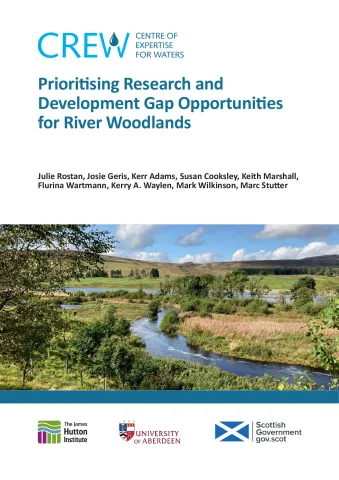River woodlands (RW) play a crucial role in protecting river ecosystems, for example by reducing flooding, storing carbon, filtering pollution, and benefiting local communities. However, nearly 55% of surveyed riverbank in Scotland show poor RW health. This highlights a need for RW restoration. While RW initiatives like Riverwoods are gaining traction, scaling them up remains challenging. In 2022, Riverwoods conducted a review of existing research on RW benefits, identifying 60 key knowledge gaps. However, that review did not consider the perspectives of different stakeholders such as policymakers, landowners, businesses, and conservation groups. Our project builds on that work by updating the scientific review and incorporating stakeholder priorities. Many policies support RW restoration, including the Scottish Biodiversity Strategy, Forestry policies, and the National Adaptation Plan. However, more work is needed to turn knowledge into practical guidance for policymakers, businesses, conservation groups, and other stakeholders.
This project aimed to:
- Review existing research to assess the strength of evidence on RW benefits and identify remaining knowledge gaps.
- Engage stakeholders (academics, policymakers, businesses, and environmental groups) to determine research priorities and practical needs for RW restoration.
- Find solutions to address these gaps and support investment in RW projects.
